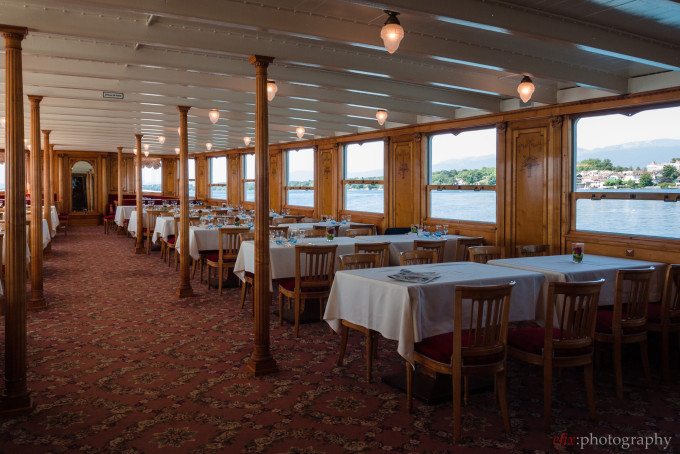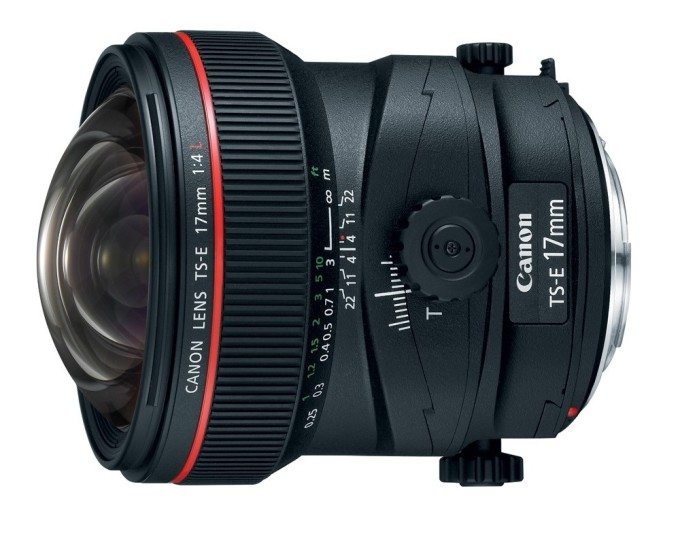Wide-angle photography is one of the master disciplines of photography. It’s not something you just do, it’s something that needs a lot of thought, as proper composition is crucial in wide-angle photography. And just like mastering the artistical aspect of it, the construction of a great wide-angle lens is anything but a routine job for a lens designer. In order to honor some of the greatest achievements in the history of wide-angle lens design, here’s The Phoblographer’s list of the top five most extreme wide-angle lenses ever built.
Zeiss Hologon 15/16mm f8

The Zeiss Hologon lens was conceived in the late 1960s, and the original 15mm f8 Hologon lens for 35mm film was made specifically for the fixed-lens Hologon ultra wide-angle camera. It featured a 110° diagonal angle of view, made possible by a unique triplet formula consisting of two 180° meniscus lenses at the front and the rear, and a positive collecting lens in the middle. Its back focus distance (i.e. the distance of the rear lens element from the film plane) was a mere 4.5mm. Though the formula is seemingly ‘simple’, the construction of the lens had to follow tight tolerances in order to ensure optimal image quality.
In 1972, when the Zeiss Ikon company went bust, Leitz Wetzlar (what is Leica today) bought up the remaining stocks of Hologon lenses and converted them to M-mount. For a long while, the Zeiss Hologon was the widest lens available for the M rangefinder system. In the early nineties, the Hologon experienced a short revival, when it was reformulated to a focal length of 16mm and introduced for the Contax G system made by Kyocera in Japan. This version of the lens has a slightly different lens construction with five elements in three groups, but the basic optical formula remains the same.
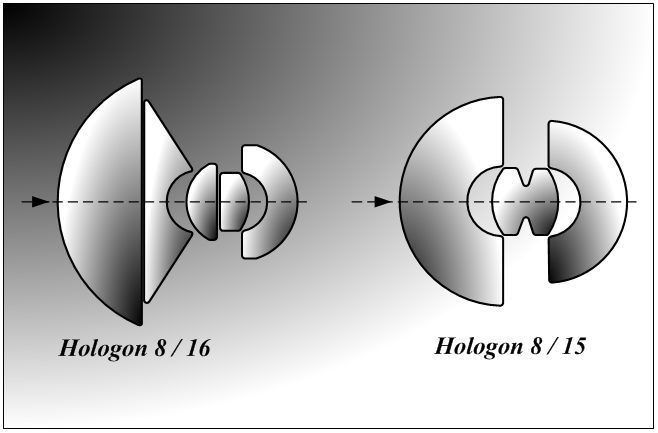
Today, various M-mount versions of the lens can be found: the ‘official’ Leitz-converted M-mount Hologon, conversions of the original lens from the Hologon camera, and conversions of the later 16mm Hologon for the Contax G camera. The latter has the advantage of being a more modern lens with the famous Zeiss T* coating, but neither lens is exactly cheap, as the Hologon has somewhat of a legendary status in the world of wide-angle lenses.
More info on the Zeiss Hologon lens can be found here.
Nikon Fisheye-Nikkor 6mm f2.8
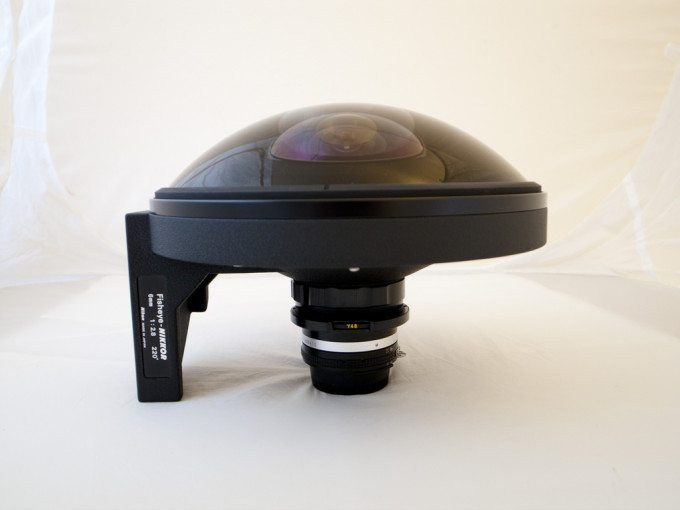
In the world of extreme wide-angle lenses, this is the most extreme of them all: the Fisheye-Nikkor 6mm f2.8. We recently reported about this beast when a number of copies popped up on eBay, so you may already know the specifications. If not, here’s a reminder: Introduced in 1972, 6mm focal length with an f2.8 intial aperture, designed for 35mm SLR cameras, 220° angle-of-view meaning it can actually look behind itself, weighing more than 5 kgs (11 lbs), and a front lens element so huge that it has its own gravitational pull. Okay, we’re exaggerating on that last bit.
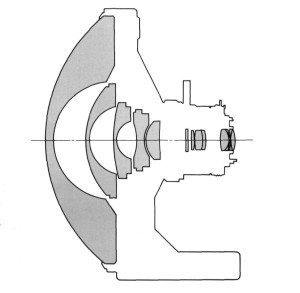 Because it is a retrofocus lens, it can be used on any Nikon (D)SLR camera without the mirror locked up, meaning that you actually get to see through the lens when looking into the viewfinder. For a lens of this focal length and angle-of-view, that is quite extraordinary. However, because of the incredible 220° angle of view, photographers need to be extremely cautious not to get their legs in the picture. Since it is so heavy, though, it is best used on a tripod anyway. And because of its size and weight, it comes with its own case for transportation.
Because it is a retrofocus lens, it can be used on any Nikon (D)SLR camera without the mirror locked up, meaning that you actually get to see through the lens when looking into the viewfinder. For a lens of this focal length and angle-of-view, that is quite extraordinary. However, because of the incredible 220° angle of view, photographers need to be extremely cautious not to get their legs in the picture. Since it is so heavy, though, it is best used on a tripod anyway. And because of its size and weight, it comes with its own case for transportation.
Today, the Fisheye-Nikkor 6mm f2.8 is very sought-after by collectors, and demands premium prices that can go well beyond US-$ 100k. More info on the Fisheye-Nikkor 6mm f2.8 lens can be found here.
Voigtländer Ultra Wide-Heliar 12mm f5.6
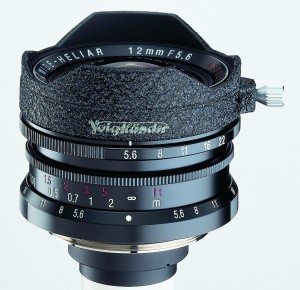 Announced in 2000, this is the lens that dethroned the Zeiss Hologon as the widest lens ever made for M-mount cameras. Topping it in both angle-of-view (121° vs. 110°) and aperture size (f5.6 vs. f8), the 12mm f5.6 is also the widest rectilinear (i.e. non-fisheye) lens ever made for the 35mm format. And the Heliar has another advantage over the Hologon: it was made not only for M39 screw mount and M-mount cameras, but also for Nikon S-mount rangefinders and for F-mount SLRs. On the latter, it can only be used with the mirror locked up, though, due to its short back focus.
Announced in 2000, this is the lens that dethroned the Zeiss Hologon as the widest lens ever made for M-mount cameras. Topping it in both angle-of-view (121° vs. 110°) and aperture size (f5.6 vs. f8), the 12mm f5.6 is also the widest rectilinear (i.e. non-fisheye) lens ever made for the 35mm format. And the Heliar has another advantage over the Hologon: it was made not only for M39 screw mount and M-mount cameras, but also for Nikon S-mount rangefinders and for F-mount SLRs. On the latter, it can only be used with the mirror locked up, though, due to its short back focus.
While the angle-of-view of the 12mm Heliar might not be as extreme as that of the 6mm Nikkor fisheye, it is still wide enough to be a serious challenge for the photographer. With this lens, it is extremeley difficult to achieve straight lines in an image. And just as the Fisheye-Nikkor, it has a tendency of including your feet in the frame if you’re not careful. When mastered, though, it can be used to produce some stunning wide-angle photography, be it of landscapes, architecture or interiors.
Unlike the Hologon and the Fisheye-Nikkor, the 12mm f5.6 Ultra Wide-Heliar is still in production, currently made in M-mount exclusively by Cosina in Japan. It is available in M-mount at Adorama, Amazon and B&H Photo.
Leica Summilux-M 21mm f1.4
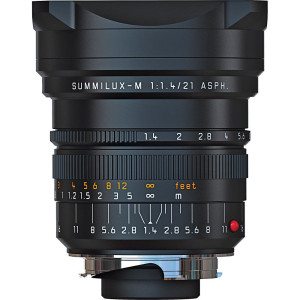 So far, the extremes we talked about were mostly concerned with a lens’ angle-of-view. The Leica Summilux-M 21mm f1.4 is not particularly extreme in that regard, with 92° of diagonal angle-of-view being fairly moderate for super wide-angle lenses. What makes this particular lens stand out, though, is its intial f1.4 aperture, which makes it the fastest super wide-angle lens for the 35mm format.
So far, the extremes we talked about were mostly concerned with a lens’ angle-of-view. The Leica Summilux-M 21mm f1.4 is not particularly extreme in that regard, with 92° of diagonal angle-of-view being fairly moderate for super wide-angle lenses. What makes this particular lens stand out, though, is its intial f1.4 aperture, which makes it the fastest super wide-angle lens for the 35mm format.
Creating such a fast wide-angle is a serious challenge for lens designers, as they have to overcome all sorts of obstacles in the process. The wider the initial aperture, the more apparent optical flaws will become, which means that the lens design has to be close to perfect–which is what Leica’s lens designers try to achieve all the time. But the more perfect you try to make a lens, the more lens elements you’ll end up incorporating into the optical formula, which is why the Summilux-M 21mm f1.4 is so huge, heavy, and expensive.
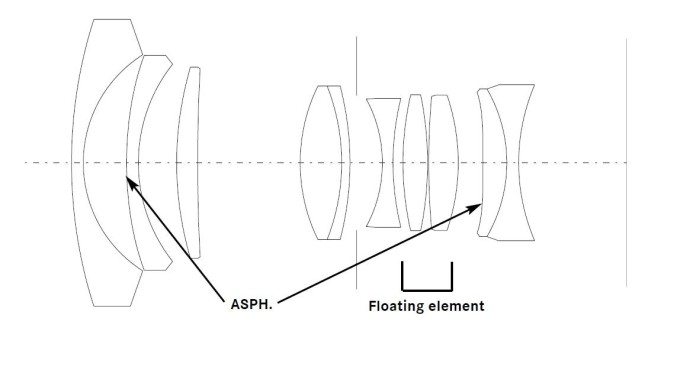
On the other hand, there really is no other lens with a comparable angle-of-view that offers the same amount of speed and subject isolation as this one.
The Leica Summilux-M 21mm f1.4 is avaialble at Adorama, Amazon and B&H Photo.
Canon 17mm f4 TS-E
Finally, the last entry in our list of extreme wide-angle lenses, the Canon 17mm f4 TS-E. Not only does this lens have an extremely wide diagonal angle-of-view of 104°, it is also the widest tilt-shift lens currently available for the 35mm format. For those unfamiliar with the term, a tilt-shift lens is a lens that can be both tilted and shifted (duh), in order to achieve certain optical effects that are needed in architectural and product photography. Here’s a Wikipedia article that describes in detail what a tilt-shift lens does.

A tilt-shift lens is much more complex to design than a regular wide-angle lens for several reasons. For one, the tilting and shifting mechanisms need to be accomodated within the overall lens design, meaning the rearmost lens element must be further away from the lens mount for in order to be able to actually move the whole optical complex. Secondly, the image circle of the lens must exceed that of the 35mm format, so you don’t end up with dark corners when tilting or shifting the lens.
Considering that the lens designers will also strive to make the optical performance of the lens as good as possible, i.e. little to no vignetting, distortion, and other kinds of optical aberrations, the pure fact that the Canon 17mm f4 TS-E even exists is a little miracle in itself.
The Canon 17mm f4 TS-E is available at Adorama, Amazon and B&H Photo.
Please Support The Phoblographer
We love to bring you guys the latest and greatest news and gear related stuff. However, we can’t keep doing that unless we have your continued support. If you would like to purchase any of the items mentioned, please do so by clicking our links first and then purchasing the items as we then get a small portion of the sale to help run the website.


